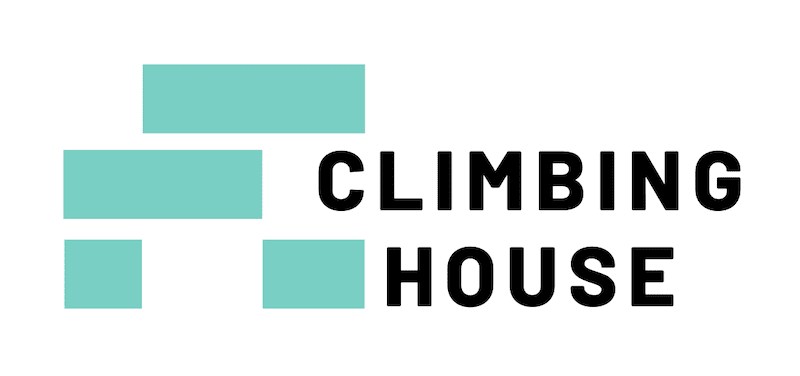The 9 Best Climbing Ropes (2024 Buying Guide)
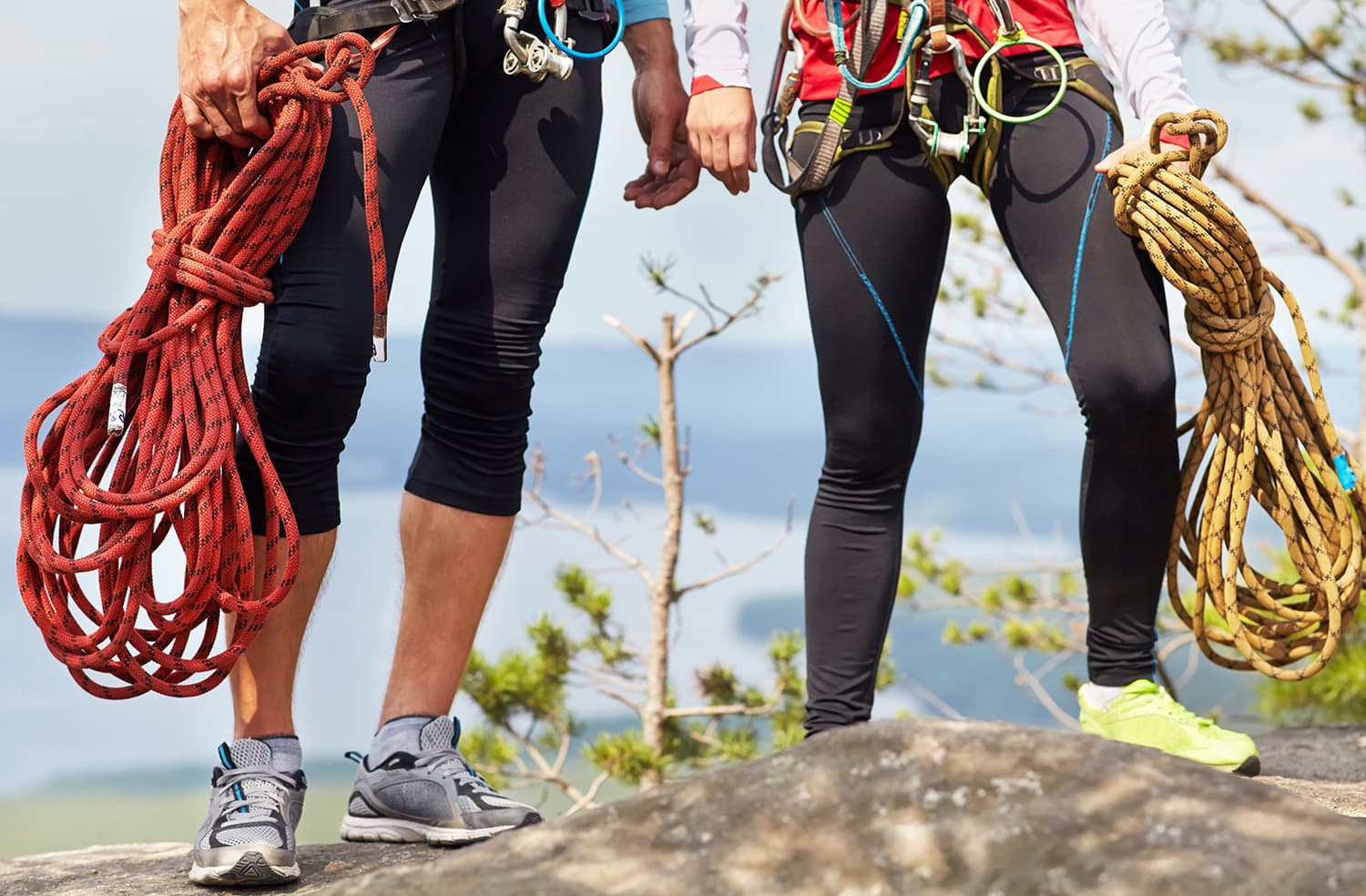
Published on: 11/17/2022
Introduction
Finding the right climbing rope is an essential part of getting yourself ready for vertical adventures, whether you plan on indoor climbing, sport climbing at the crag, or climbing on ice/in the alpine. There are many different types of rope available to today’s climbers, and we’ve outlined how to pick the best climbing rope for your needs before. Even when you know which type of cord you need, it can still be overwhelming to sort through the many ropes on the market. With so many brands in competition, finding the best of the best is a difficult task.
We created this guide to help you find your dream rope. Whether you’re a beginner looking to pick up your first climbing rope, or a seasoned veteran looking for lines to use on big walls, we’ve got you covered. We sorted through expert and user reviews and looked at important metrics like price, features, and grams per meter to determine which ropes deserve your consideration. If you’re looking for a guide to help you decide exactly which rope will fit your needs, you’ve come to the right place!
Our Method
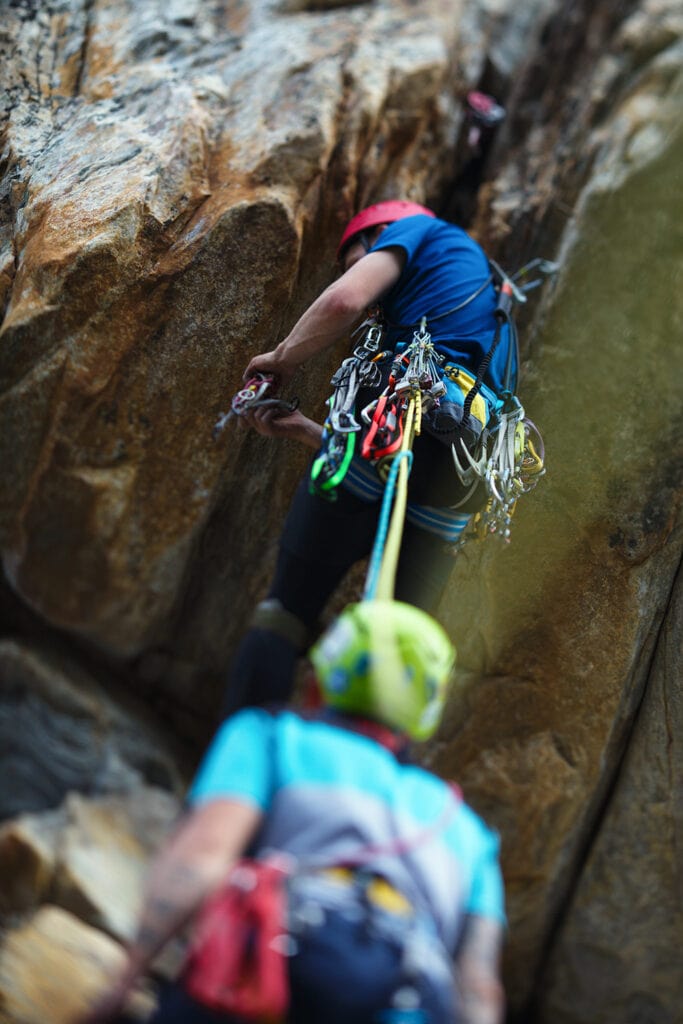
In compiling our list of the best climbing ropes on the market, we looked at user reviews across the internet, compiled data on average prices, and consulted with professionals in the guiding industry. Each rope has been selected for a specific set of criteria (e.g., best beginner climbing rope, best budget climbing rope, best half rope, etc.). No one rope was the best in every category. Rather, they all had specific strengths and weaknesses that work well for some types of climbing and aren’t ideal for others.
If you’re someone who climbs often on a variety of different styles of rock and ice, chances are you already know the benefits of having multiple ropes to choose from when you rack up. That said, if you’re looking to buy a single rope to perform a variety of tasks, we have a few good workhorse options listed as well.
Our Selection of the Best Climbing Ropes of 2024

Comparison Table
| Climbing Rope | Diameter | UIAA Fall Rating | Weight | Best for | Best Offer |
|---|---|---|---|---|---|
Mammut Crag Classic 9.5 | 9.5 mm/0.4 in | 7 | 59 g/m – 1.9 oz/yd | Beginners | Check Prices |
Edelrid Swift Eco Dry 8.9 | 8.9 mm/0.3 in | 5 | 51 g/m – 1.6 oz/yd | Triple-Rated | Check Prices |
Black Diamond 10.2 Climbing Rope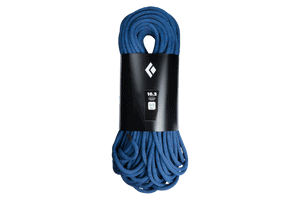 | 10.2 mm/0.4 in | 5 | 66 g/m – 2.1 oz/yd | Workhorse | Check Prices |
Edelweiss Oxygen II SuperEverDry 8.2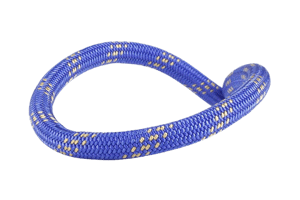 | 8.2 mm/0.3 in | 7 | 45 g/m – 1.5 oz/yd | Half/Twin | Check Prices |
Sterling Velocity XEROS 9.8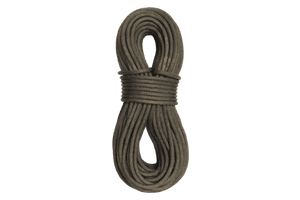 | 9.8 mm/0.4 in | 6 | 62 g/m – 2 oz/yd | Single | Check Prices |
Petzl PUR Line 6.0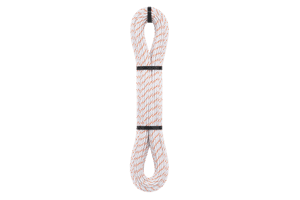 | 6 mm/0.2 in | N/A | 20 g/m – 0.6 oz/yd | Static | Check Prices |
Edelrid Tommy Caldwell Eco Dry ColorTec 9.3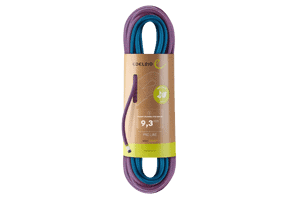 | 9.3 mm/0.4 in | 7 | 57 g/m – 1.8 oz/yd | Bicolor | Check Prices |
Bluewater Dynaplus 10.1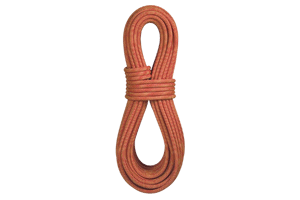 | 10.1 mm/0.4 in | 7 | 69 g/m – 2.2 oz/yd | Indoor Climbing | Check Prices |
Edelrid Boa Eco 9.8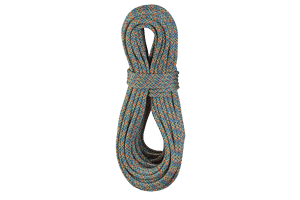 | 9.8 mm/0.4 in | 7 | 62 g/m – 2 oz/yd | Budget | Check Prices |
1. Mammut Crag Classic 9.5: Best Beginner Climbing Rope
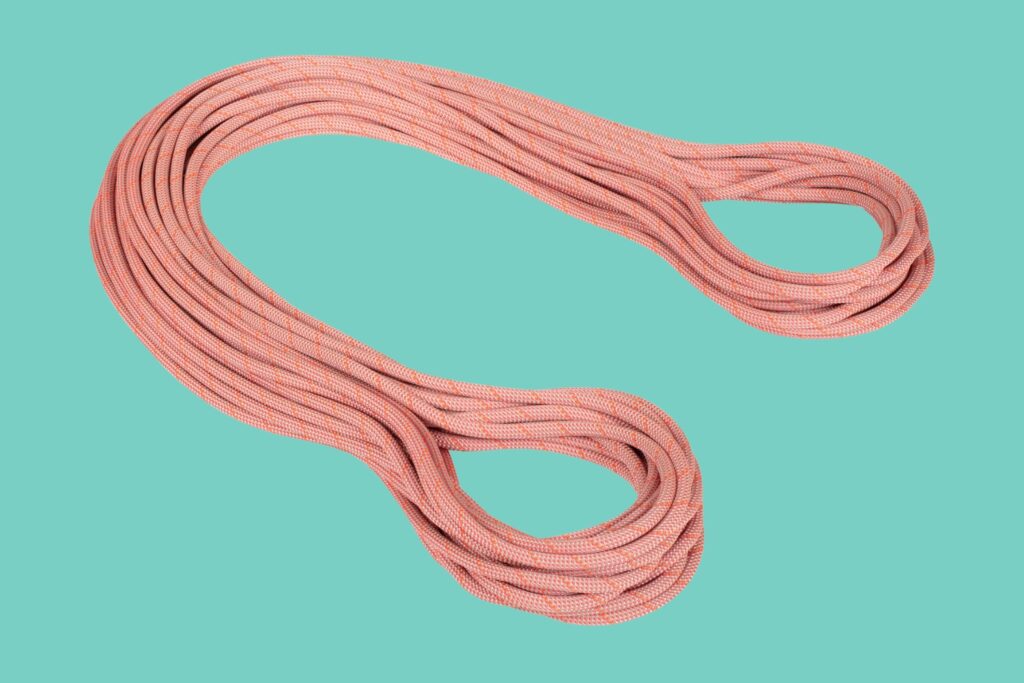
Important Specs
Diameter – 9.5 mm/0.4 in
UIAA Fall Rating – 7
Weight – 59 g/m – 1.9 oz/yd
When shopping for your first climbing rope, there are a few things to keep in mind. First off is handling; you probably aren’t the most experienced belayer and are looking to hone your skills in this area. For both your partner’s sake and yours, it makes sense to get a rope that is easy to belay with. This is one of the top reasons why we think the Mammut Crag Classic is an exceptional choice for beginner climbers, it consistently rates highly with regard to handling.
The Crag Classic performs well in many other ways as well, it’s a pretty versatile rope that will work well in any type of climbing that you will be attempting as you learn the basics. At 9.5mm/0.4 in, it strikes a great balance between weight and durability. This diameter range is perfect for both days at the gym as well as trips to the sport crag and even works well on multi-pitch climbing.
Pros
Cons
2. Edelrid Swift Eco Dry 8.9: Best Triple-Rated Rope
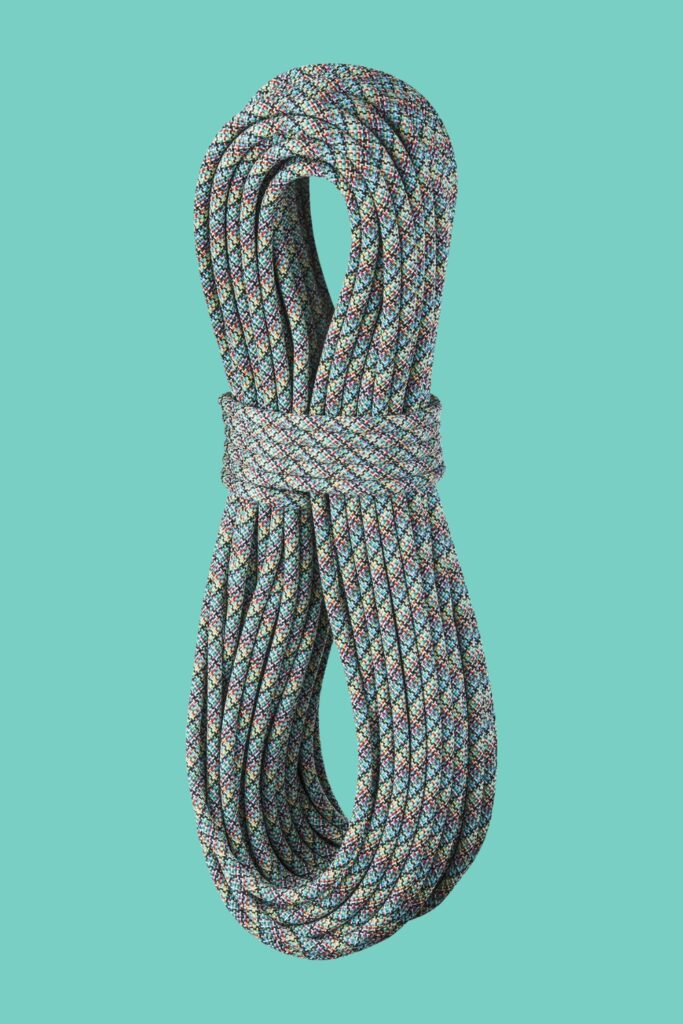
Important Specs
Diameter – 8.9 mm/0.3 in
UIAA Fall Rating – 5
Weight – 51 g/m – 1.6 oz/yd
For long days in the alpine, we prefer a skinny rope that is still single-rated, something that will work well as part of a pair of half ropes yet can safely function as a lifeline in case the second rope becomes stuck or damaged. This is actually a lot to ask, and many climbing ropes aren’t up to this specific task. The Edelrid Swift line is designed for alpine climbing objectives where high demands are placed on your gear. It is triple-rated, meaning it will perform the functions that single ropes do, as well as half and twin ropes. 8.9mm/0.3 in is a middle-of-the-road diameter, it’s burly when compared to systems of two half ropes designed for ice climbing, but when compared to other single ropes, it’s quite lightweight.
The Edelrid Swift features an eco-dry treatment for wet conditions, and the core and sheath are bonded together for greater longevity. Edelrid put some of their higher-end technology into designing a particularly durable sheath that can withstand running over sharp alpine granite. We recommend the Edelrid Swift for experienced climbers who want an extra durable rope to use in a system with two ropes on multi-pitch routes.
Pros
Cons
3. Black Diamond 10.2 Climbing Rope: Best Workhorse Rope
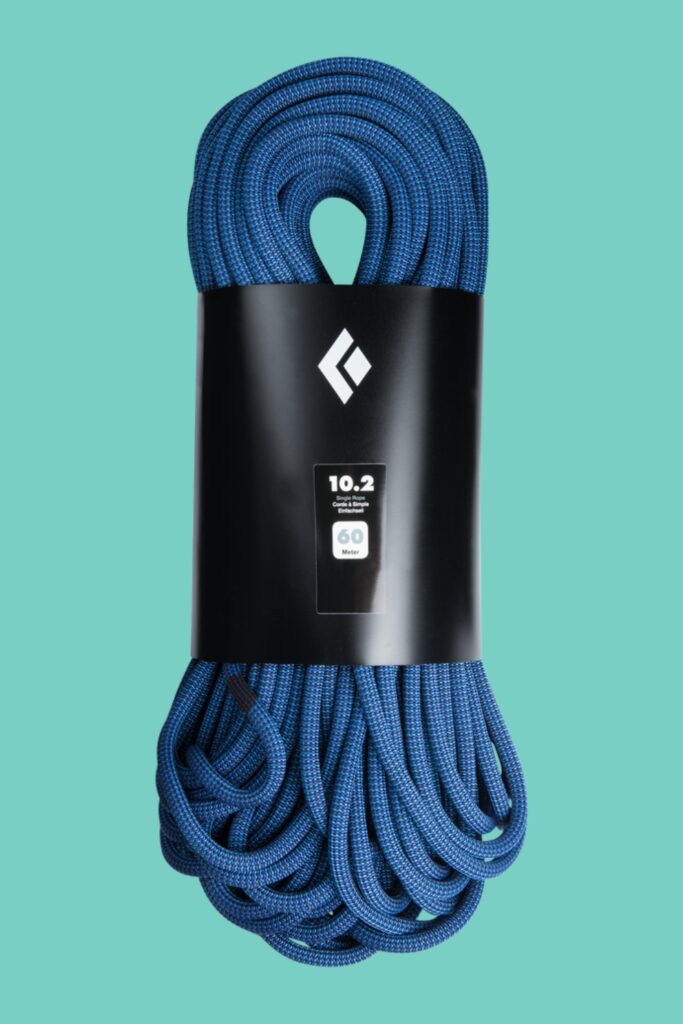
Important Specs
Diameter – 10.2 mm/0.4 in
UIAA Fall Rating – 5
Weight – 66 g/m – 2.1 oz/yd
Whether you’re a sport climber who’s pushing your grade consistently or a big wall climber scaling routes that dish out lots of abuse on your gear, there’s a big benefit to having a thick rope that can withstand lots of wear. Black Diamond’s 10.2 (they aren’t big on branding their ropes) is a great option for those on the market for reliable workhorse ropes.
This is definitely not a lightweight rope. At 66 g/m (2.1 oz/yd), it isn’t suited to long approaches or climbs where rope drag combined with weight could make tricky moves more difficult. Where this rope does shine is in highly abrasive situations, think climbs that involve multiple pendulums, rope running over edges to the belay, and on steep overhangs. It also works well for those top roping sessions where you might fall more times than you’d like to admit at the crux.
Black Diamond outfitted this rope with a middle mark, so it’s easy to set up long rappels confidently. It also features a 1×1 woven sheath, which prevents early wear and tear on the outside of the rope. For sport climbers projecting hard routes on top rope, the relatively low static stretch is sure to be welcomed, as it will help retain hard-earned progress.
Pros
Cons
4. Edelweiss Oxygen II SuperEverDry 8.2: Best Half Ropes
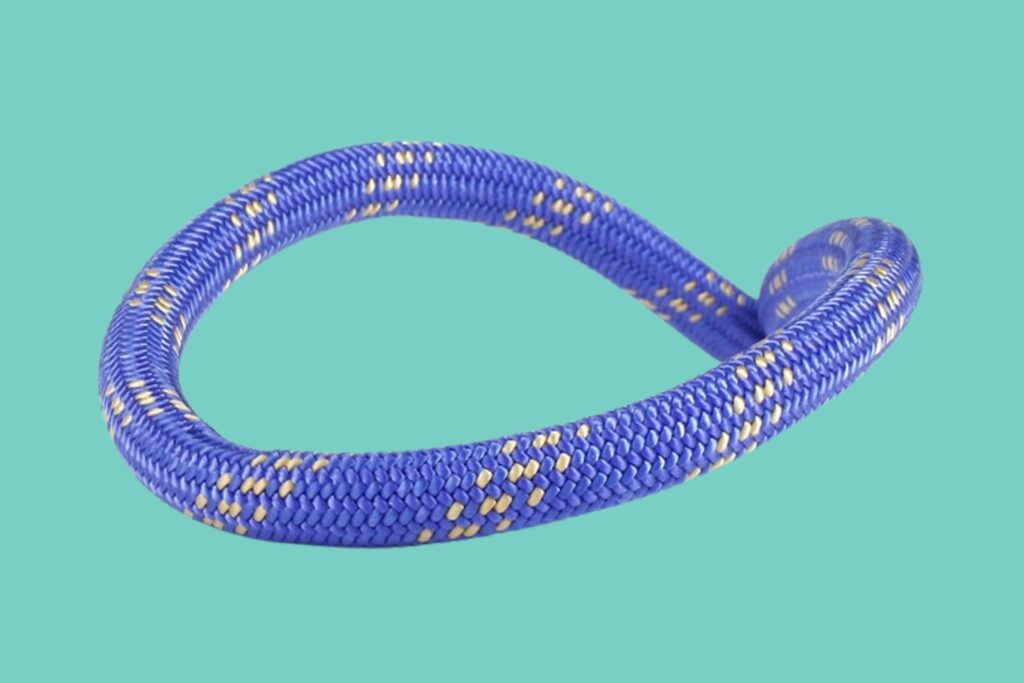
Important Specs
Diameter – 8.2 mm/0.3 in
UIAA Fall Rating – 7
Weight – 45 g/m – 1.5 oz/yd
For trad climbers, ice climbers, and mountaineers working on long and meandering routes, half ropes are the name of the game. A double rope system has many benefits, from greatly reducing rope drag to catching falls with less force put on each strand and, of course, longer rappels. It makes sense to get ropes of the same diameter, they will tie together more easily (and safely) and feed through your belay device better.
The Oxygen II SuperEverDry from Edelweiss is an outstanding half/twin rope that really shines on ice and alpine climbs. One of the top features here is the dry treatment. While most dry-treated ropes either have a sheath or core that will repel water, the SuperEverDry has both. This really helps it shed moisture and keeps things running smoothly in wet and cold conditions. It has other standard half/twin rope features that alpine climbers appreciate. The skinnier ropes have more dynamic elongation, giving a softer catch and putting less impact force on marginal climbing gear. The half-rope system works to reduce rope drag, and because both ropes absorb fall force, they tend to have more UIAA falls. A durable sheath and unicore construction guarantee better longevity.
Pros
Cons
5. Sterling Velocity XEROS 9.8: Best Single Rope
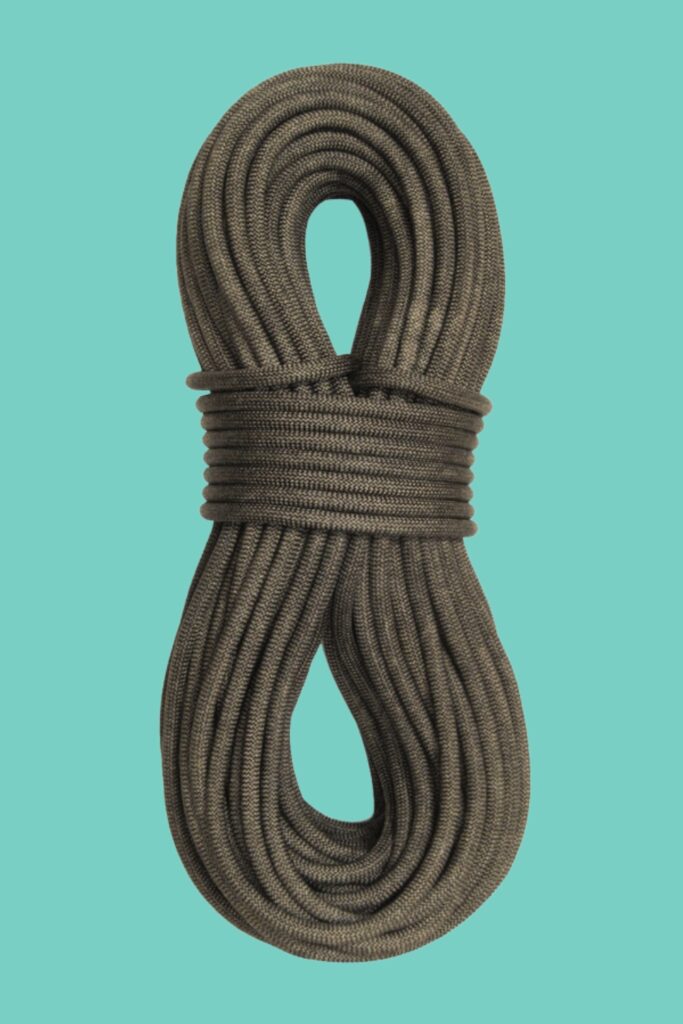
Important Specs
Diameter – 9.8 mm/0.4 in
UIAA Fall Rating – 6
Weight – 62 g/m – 2 oz/yd
A true jack of all trades, the Sterling Velocity is a tried and tested climbing rope that does lots of things well. Whether lead climbing or top roping, alpine climbing, or lowering off a tall boulder to “check out the holds,” this line has your back. With highly rated handling, a respectable amount of UIAA falls, and a new dry treatment technology, the Velocity 9.8 is one of the most well-rounded ropes on the market. While the Velocity comes in bicolor options, all non-bicolor versions come with marks in the middle of the rope to make rappels easy and less worrisome.
While the Velocity is well known as a climbing rope that rates high in durability and longevity, it does weigh slightly more than other ropes with the same diameter. This may be due to the construction, and it is probably the reason why it tends to be a bit burlier when compared to dynamic ropes of a similar diameter. In the end, we find that unless you’re consistently hiking into the alpine or up particularly bad approaches, the extra weight is worth the added durability and great handling.
Pros
Cons
6. Petzl PUR Line 6.0: Best Static Rope
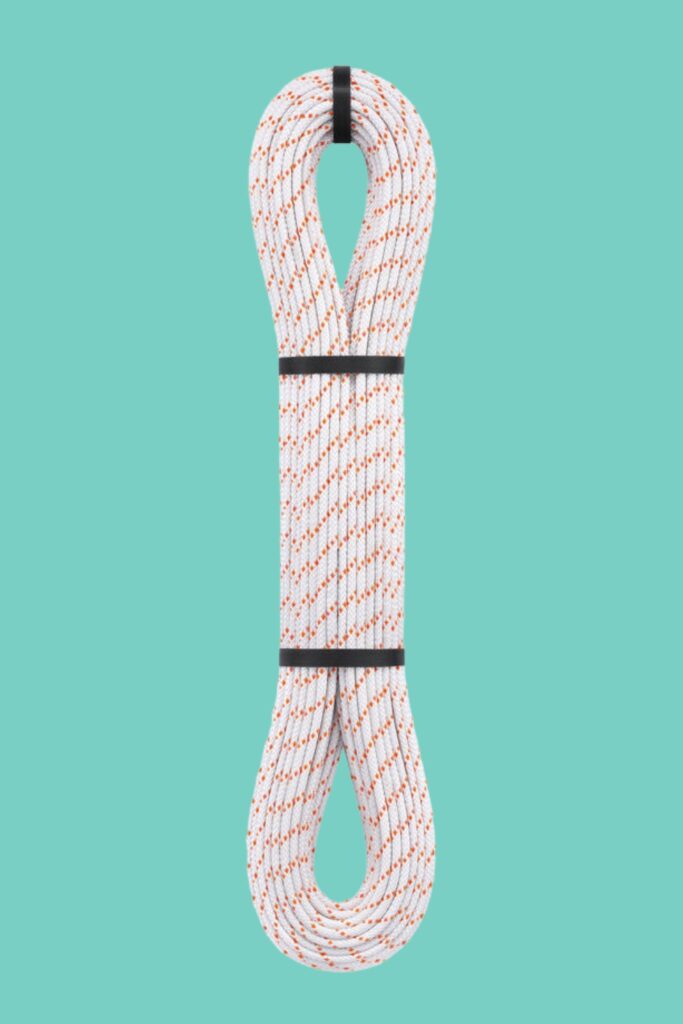
Important Specs
Diameter – 6 mm/0.2 in
UIAA Fall Rating – N/A
Weight – 20 g/m – 0.6 oz/yd (!!!)
When you need a tag line for hauling gear and setting up long rappels with a single rope, the last thing you want is a heavy, thick static rope to lug around everywhere you go. Not long ago, it wasn’t uncommon for static ropes to have similar diameters to dynamic climbing ropes. Now, the future is here. Petzl’s PUR line is a full-strength, highly abrasion-resistant tag line that you can haul with and use for pulling ropes left up high at rappels.
A scant 20 grams per meter means that a lightweight single rope (Petzl’s Volta, for example) paired up with a 65-meter PUR line may actually be lighter than a two-rope system. The cord has a rough sheath that facilitates handling, although we can’t expect anything too good from a 6mm/0.2-inch rope. Still, the PUR works well with many ascenders and stacks well, helping with rope management at belays. This is definitely a niche product, made mostly for alpinists and big wall climbers. However, it is the lightest and best performing of all static ropes on the market, which earned it this spot on our list.
Pros
Cons
7. Edelrid Tommy Caldwell Eco Dry ColorTec 9.3: Best Bicolor Rope
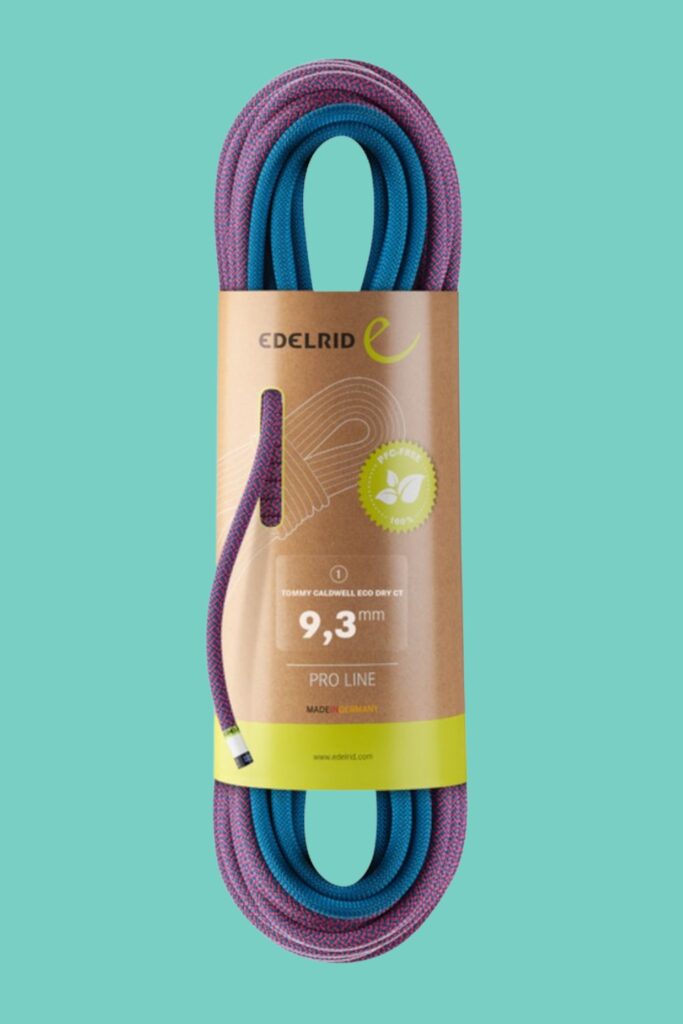
Important Specs
Diameter – 9.3 mm/0.4 in
UIAA Fall Rating – 7
Weight – 57 g/m – 1.8 oz/yd
Not all bicolor ropes are equal in terms of their bicolor-ness. Sometimes the distinction is subtle, which makes us wonder if it’s even worth the extra cash or whether a middle mark would work just as well. Edelrid’s Tommy Caldwell Eco Dry ColorTec line is indisputably two colors, and it makes us love bicolor ropes once again.
Aside from the fact that this rope has a permanent middle mark, the TC Eco Dry is an exceptionally well-made rope, with a sheath that’s both highly resistant to abrasion and also soft and well handling. In addition to this, the rope has an eco-friendly dry treatment that resists water and dirt. At 57 grams per meter, this is also quite the ultralight rope, especially considering that it is rated as a single line. The multiple high-end features built into this line make it a good climbing rope for longer tours. If a high-performance rope is what you need, this definitely merits your consideration.
Pros
Cons
8. Bluewater Dynaplus 10.1: Best Rope for Indoor Climbing
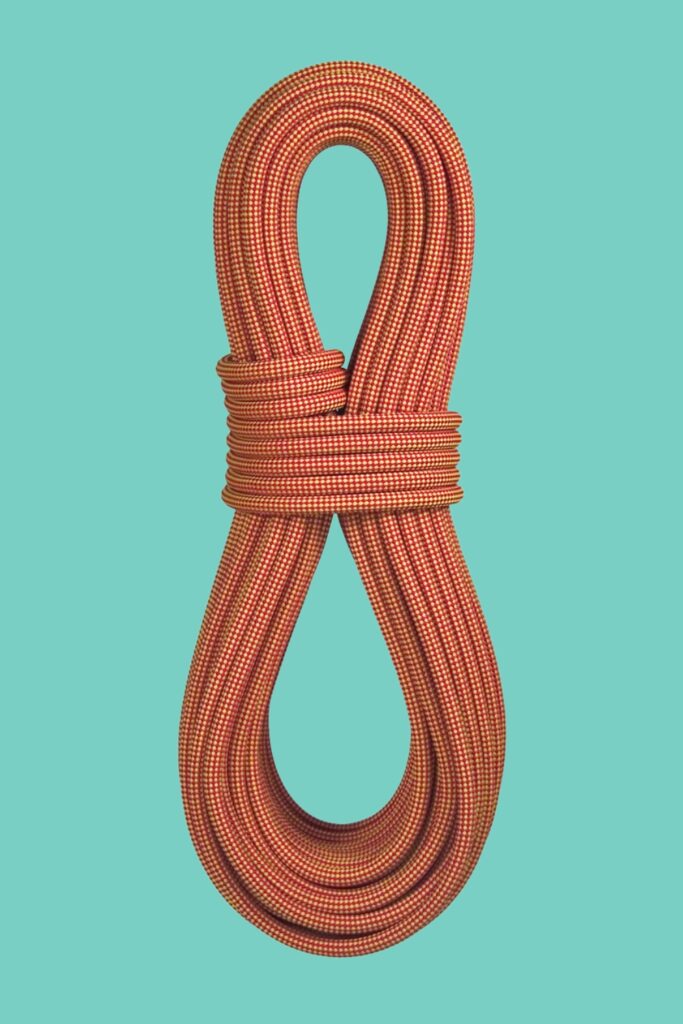
Important Specs
Diameter – 10.1 mm/0.4 in
UIAA Fall Rating – 7
Weight – 69 g/m – 2.2 oz/yd
Even if you enjoy outdoor climbing, having a dedicated gym climbing rope can be a good idea. In fact, it can even increase the lifespan of your other ropes. Being able to use thicker rope at the gym also means that it will have better handling, which is important if you’re new to climbing and still learning knots and belay technique. The Bluewater Dynaplus is the best climbing rope for indoor use. 10.1mm/0.4 in is a great diameter suited to the needs of indoor climbing (the rope’s weight is not important here). It will lock up very easily in virtually all belay devices, which is a plus when you’re receiving belays from beginner belayers at the gym. This rope also has a high fall rating, which is indicative of a long lifespan.
If you are a newer climber who is learning in the gym and will mostly use your rope there, with potential single-pitch climbing outdoors on a top rope, this could be a great option for you. One of the most attractive features of this model is the price, if you choose a rope length of 37 meters, it will cost you less than most ropes that are available.
Pros
Cons
9. Edelrid Boa Eco 9.8: Best Budget Rope

Important Specs
Diameter – 9.8 mm/0.4 in
UIAA Fall Rating – 7
Weight – 62 g/m – 2 oz/yd
While there are plenty of reasons to love high-end ropes and the many luxuries they offer, there are also some good reasons to look for a cheap one as well. If you climb often or on particularly sharp rocks, chances are any rope you use will wear out fast. In that case, why not choose a more affordable rope, knowing that it will need to be replaced soon anyways? Luckily, even the more basic modern climbing ropes available do a fine job of keeping you and your partner safe. Edelrid’s Boa line is a great option for the budget conscious that still performs well no matter what type of climbing you practice. At 9.8 mm/0.4 in, this is a reliably durable rope that works well as a choice for sport climbers as well as trad climbing.
Another reason to love this climbing rope is its eco-friendly construction. Edelrid weaves the Boa Eco out of leftover strands in their factory. This doesn’t mean a compromise on quality, as the rope actually has a pretty high fall rating. However, you can see that the colors of each individual stand woven into the sheath are very different. While some may think it’s strange, we like the funky blend of dark and bright hues.
Pros
Cons
How to Find the Perfect Climbing Rope
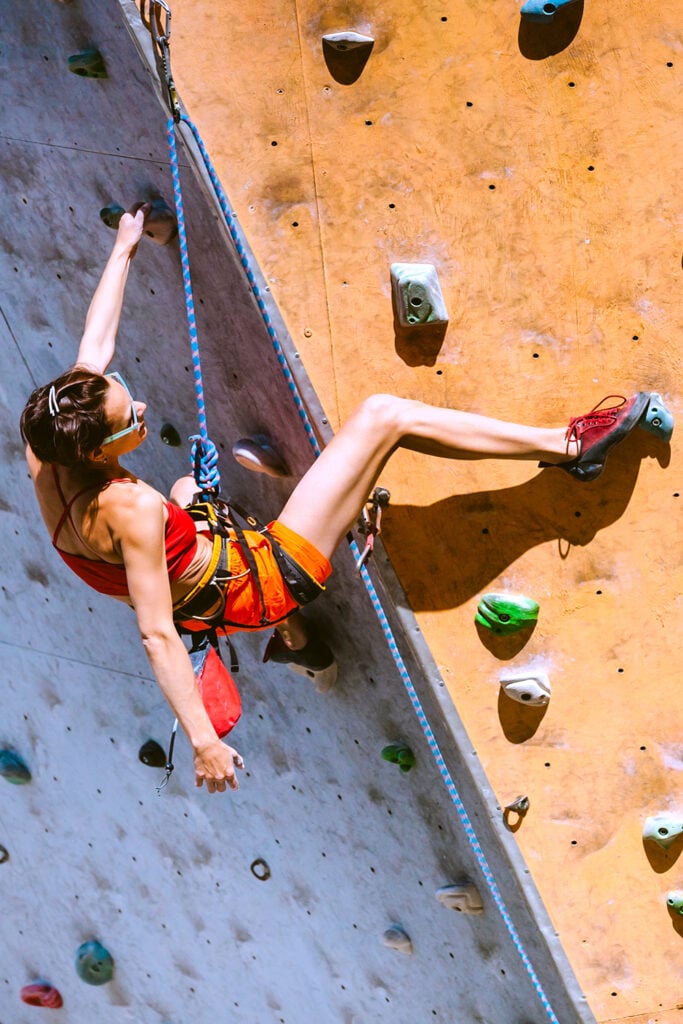
For starters, there is no single “best climbing rope” because there are so many different disciplines within the sport that no single rope can be the best at everything. When you are looking for a new rope, consider what you want to do with it and which climbing rope features will be most important for you. Will you be focused on gym climbing? Outdoor climbing? Ice climbing or alpine climbing? The answer to this question will help you narrow your search greatly.
For beginners
Beginner climbers who are just learning the basics of lead climbing will be better off using a system with only one rope and will probably appreciate the more user-friendly handling thicker ropes have to offer. More advanced climbers who plan on climbing in mixed conditions will surely benefit from dry-treated ropes. Anyone climbing far away from the trailhead will probably feel the burden of thick ropes on uphill approaches, meaning that a skinnier rope is probably a wise choice. We have a much more in-depth guide to choosing the right climbing rope here.
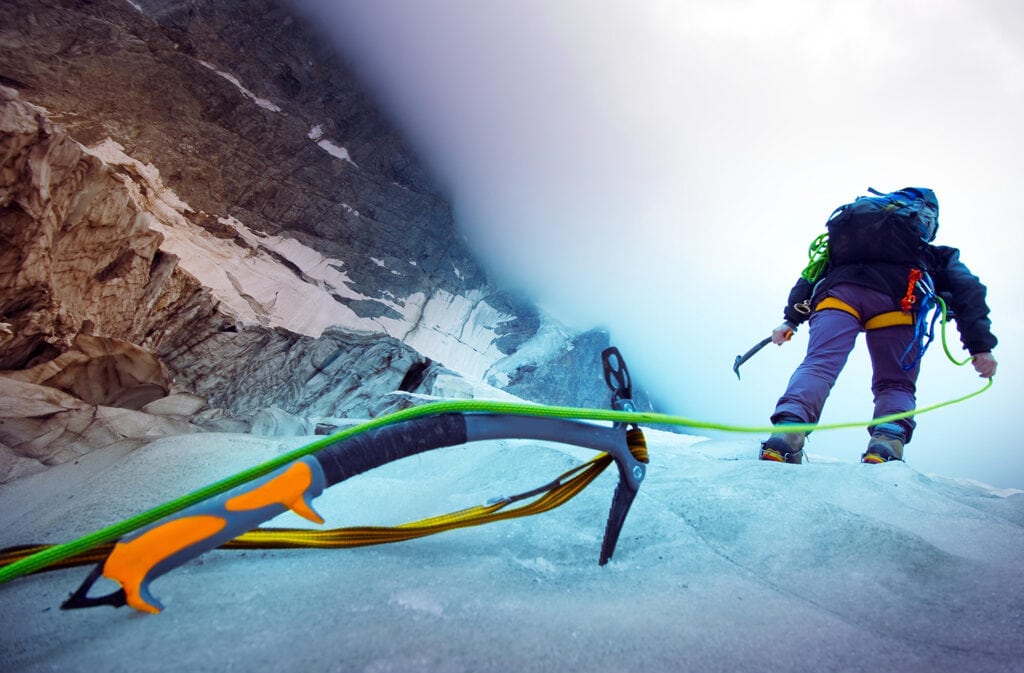
UIAA fall rating
One important thing to understand before buying a new rope is the UIAA fall rating. This is essentially a gauge of how many substantial lead climbing falls a rope can take before the dynamic elongation begins to suffer. When they are brand new, dynamic ropes stretch more than when they have been repeatedly fallen on. Think of it like a spring that is wound tightly. After stretching it out a certain number of times, the spring will remain in a stretched-out position and provide less shock absorption.
When using single ropes, skinny ropes are prone to stretching out faster. Remember that the more a rope stretches, the softer it will catch you and the safer it is. Generally, the accepted number of falls on a single rope is between 5 and 7. However, when using half or double ropes, the process of wear and tear is slowed dramatically, and the twin ropes can withstand more than 30 UIAA falls.
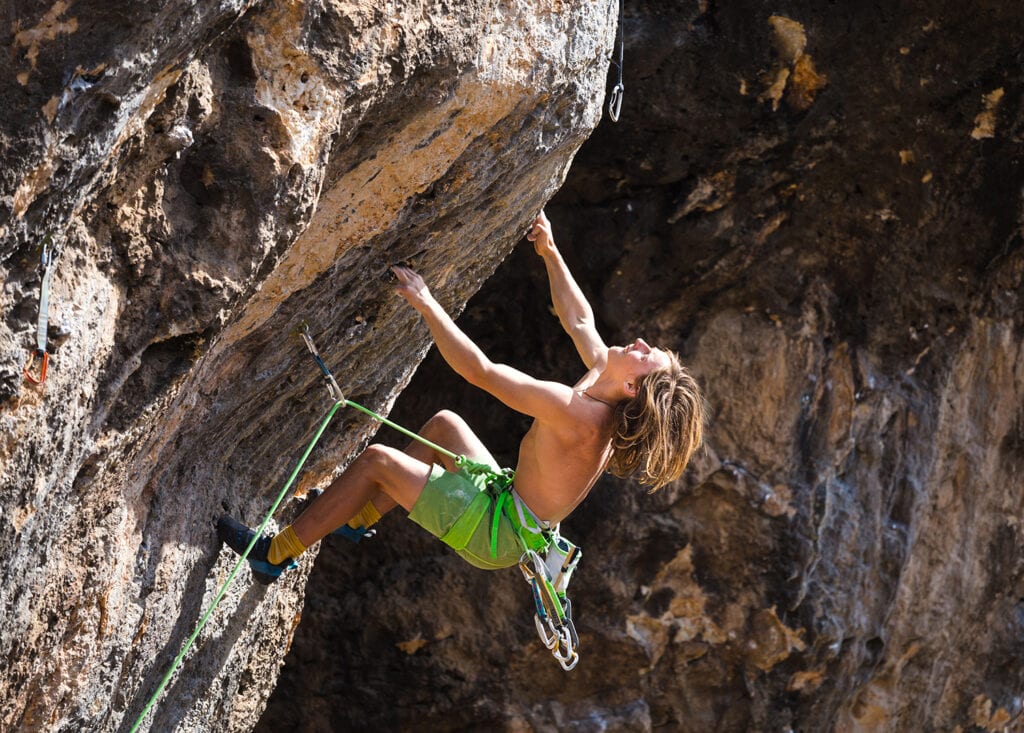
The International Climbing and Mountaineering Federation (UIAA for short) conducts tests on all certified climbing ropes to determine how many leader falls they can take before they should be retired to top roping and hauling duty. Of course, this number isn’t the only thing to keep in mind when thinking of rope safety. A rope that has been stored in wet conditions for months, for example, should be retired from climbing immediately.
Where to Buy a Climbing Rope
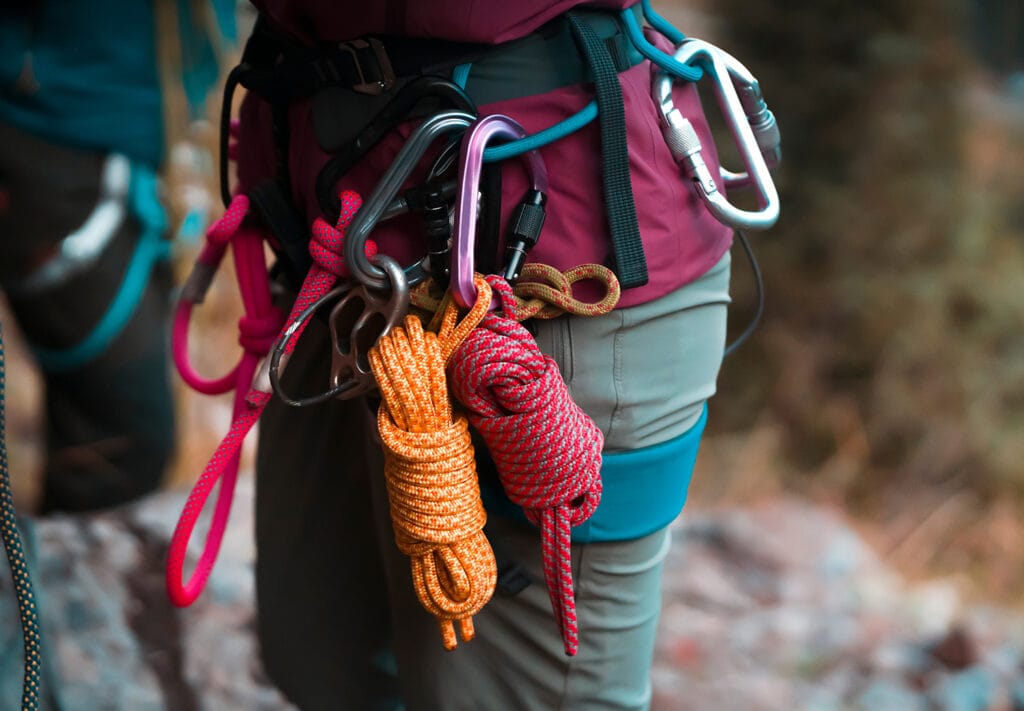
There are many different places to find climbing ropes nowadays. It’s important to remember that the climbing rope is your lifeline, so always buy from a reputable source. Stores like REI, MEC in Canada, and local outfitters will not only be able to sell you a good rope but can also provide you with some guidance in choosing the best climbing rope for your needs.
You can also find plenty of ropes from reputable online dealers like Backcountry, Moosejaw, and others. Increasingly, online retailers like Amazon and eBay also sell ropes. If you do decide to buy through one of these larger clearinghouse-style sites, make sure to check that the vendor is legitimate. Recently, there have been a few stories of counterfeit ropes being passed off on these websites.
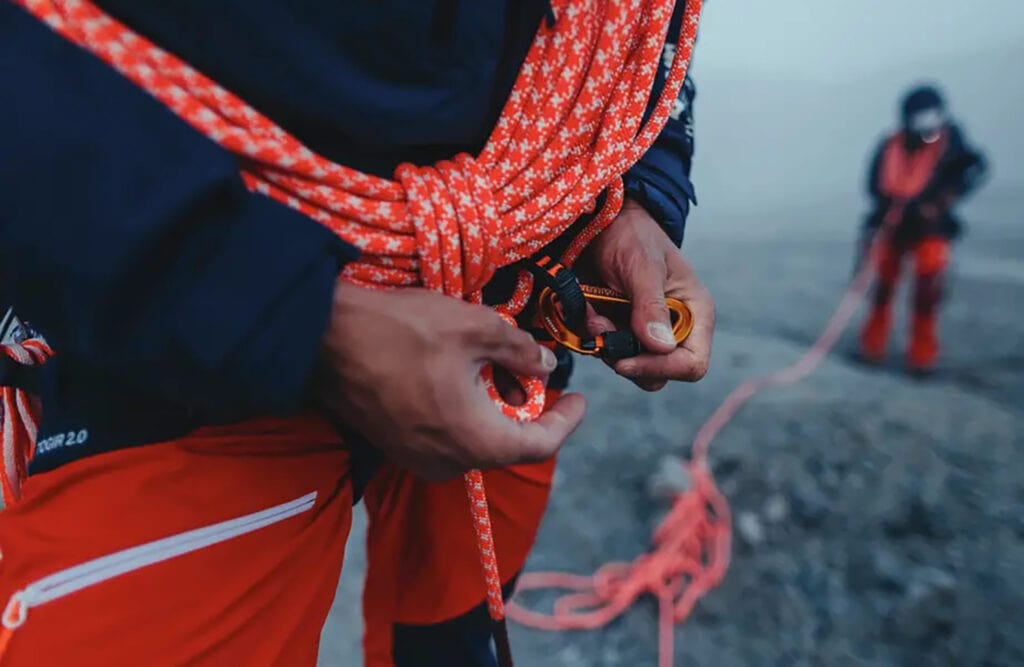
Often times it’s possible to find used ropes for sale. This often happens in rock climbing gyms, on climbing-specific Facebook groups and forums, and on Craigslist. Oftentimes, it can be a chance to get a good deal on a rope, and the previous owner may have decided to get another or had their climbing season cut short for one reason or another.
Sometimes you might be buying a rope that was only used once or twice. Still, it is important to use your judgment in these scenarios. Do you trust the person selling you the rope? What’s its condition? Has it been stored properly? How many falls has it taken, and how old is it? If you do decide to buy a second-hand rope, be sure to ask these questions to the seller. Remember that savings of even a few hundred bucks is not worth your life.
Frequently Asked Questions
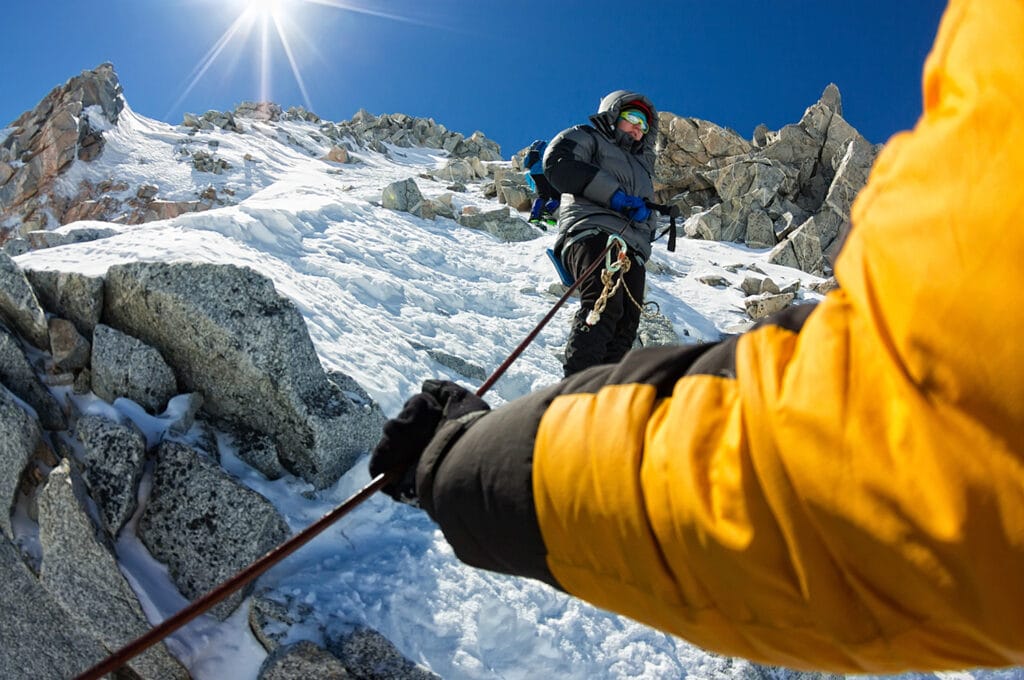
What is the Best Material for Climbing Rope?
All modern rock climbing ropes are made of nylon. Nylon is a lightweight and durable material that can withstand a lot of abuse before it starts to abrade and fall apart. It can also be wound in such a way that it has incredible dynamic elongation, the essential component of a safe climbing system.
Many ropes have a dry treatment that utilizes PFCs to help the nylon repel water. Some dry-treated ropes also use more eco-friendly sublimations, as PFCs harm the environment and take a long time to decompose.
One thing to be aware of when dealing with rock climbing rope is the melting temperature of nylon. Even though climbing ropes are incredibly strong and can withstand thousands of pounds of force, nylon melts at a relatively low temperature. It is important to always connect your rope to the wall via metal carabiners or rings. Threading your rope through a nylon sling can result in the sling being sliced through due to the heat of the friction during a fall!

What Size Rope is Best for Climbing?
Climbing ropes often come in either 60 or 70-meter lengths. A 60-meter rope is long enough to successfully rappel off most sport climbs. However, there are some areas where a 70 or even 80-meter rope may be necessary. It’s a good idea to do some research on the sport climbing crag you wish to visit before you buy a rope to determine the appropriate length. If you only have one rope in your system, remember that you will need to rappel from the middle of the rope, so plan accordingly.
For trad climbers on multi-pitch routes, there are many different options for rope systems. Maybe you want to use a single rope to climb on and a static tag line for hauling and pulling your rappel line. A longer rope length on multi-pitch climbs will make getting your rope stuck more likely. In general, we recommend 60-meter dynamic ropes and 65-meter static ropes in these situations unless you are an advanced climber.
If you are only climbing in the gym, a 30 or 40-meter rope may suffice. It may be convenient for you to buy a shorter rope and save the extra weight that outdoor climbing ropes need to make longer rappels.

What is a Triple Rated Rope?
A triple-rated rope is a rope that is appropriate to use as a single rope as well as a half and double rope. Often times these are slightly thin ropes when compared to most other single ropes, hovering between 9.5 to 8.7mm (0.4 to 0.3 in). These ropes can be used for almost any type of climbing, but often they don’t excel in any one application. Every triple-rated climbing rope will have a significantly higher fall rating when being used as a half rope or a double rope system. Triple-rated lines are some of the best climbing ropes for intermediate climbers who want to practice and learn about different systems.
What Ropes do Climbing Gyms Use?
Gyms have a different set of necessities than outdoor climbers. Many gyms see hundreds of customers every day, so their ropes get quite a bit of use. Often, gyms keep large rolls of thick ropes on hand to replace lines that get work out. Depending on the gym you go to, you may or may not be top roping the whole time. Even though top roping setups still require a dynamic rope, the impact forces on you as a climber and on the climbing gear (a fixed anchor at the top) are much lower than those involved in lead climbing. For this reason, climbing gyms often use ropes with slightly less dynamic elongation.
Some gyms require you to bring your own rope to climb on. While it’s possible to bring any single-rated rope in these scenarios, it wouldn’t make much sense to bring a fancy dry-treated rope to the gym if you have something cheaper to climb on. Often times a 40-meter/131-foot rope is enough to get by, so even a cut section of one of your old ropes may suffice.
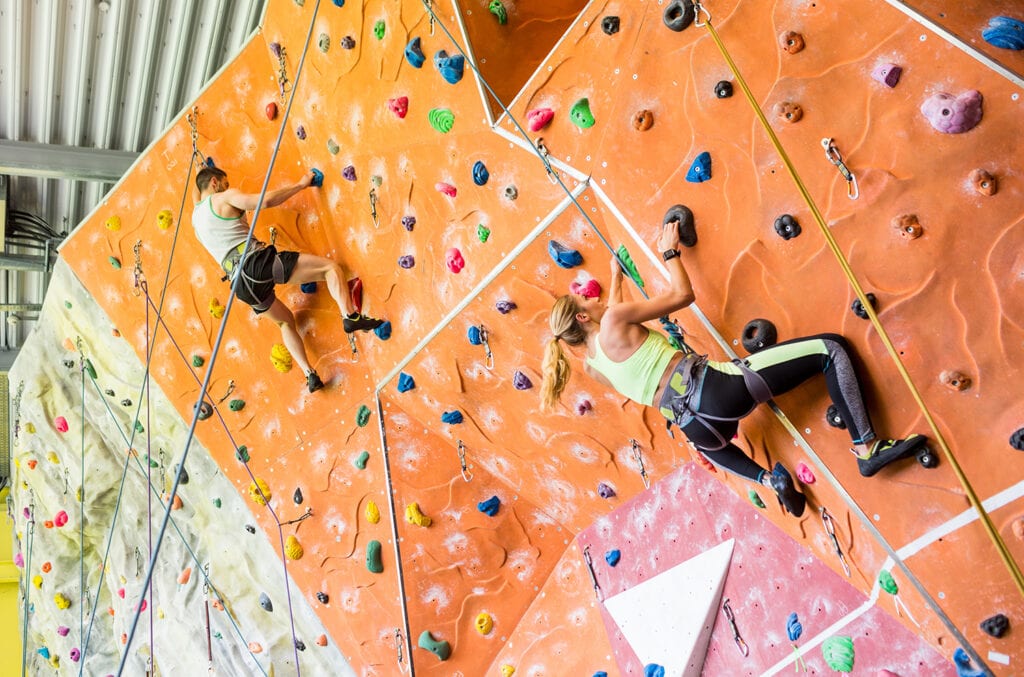
What Type of Rating Should I Look For in a Climbing Rope?
If you are new to climbing, you should look for a single-rated rope. This is going to be the simplest and most durable choice for you as you start out and learn how to climb. You will most likely want to begin by top roping. This way, your belayer will experience less impact force when you fall, and you both can learn to properly use your belay devices.
Once you begin to trad climb, it’s probably time to think about investing in some half/twin ropes. These ropes will put less impact force on your climbing gear when you do fall, and they will allow you to lead climb with less drag in the system. You can also use twin ropes with a guide-style belay device to bring up two followers from above at the same time.
Double ropes are perhaps the least common of all three systems, and true double ropes are a somewhat niche product. If you’re looking for double ropes, you probably have a route in mind that they will work well on, and you probably don’t need much guidance for us. If you think you might need a set of double ropes but you’re not really sure, the best bet would be to get two triple-rated ropes.
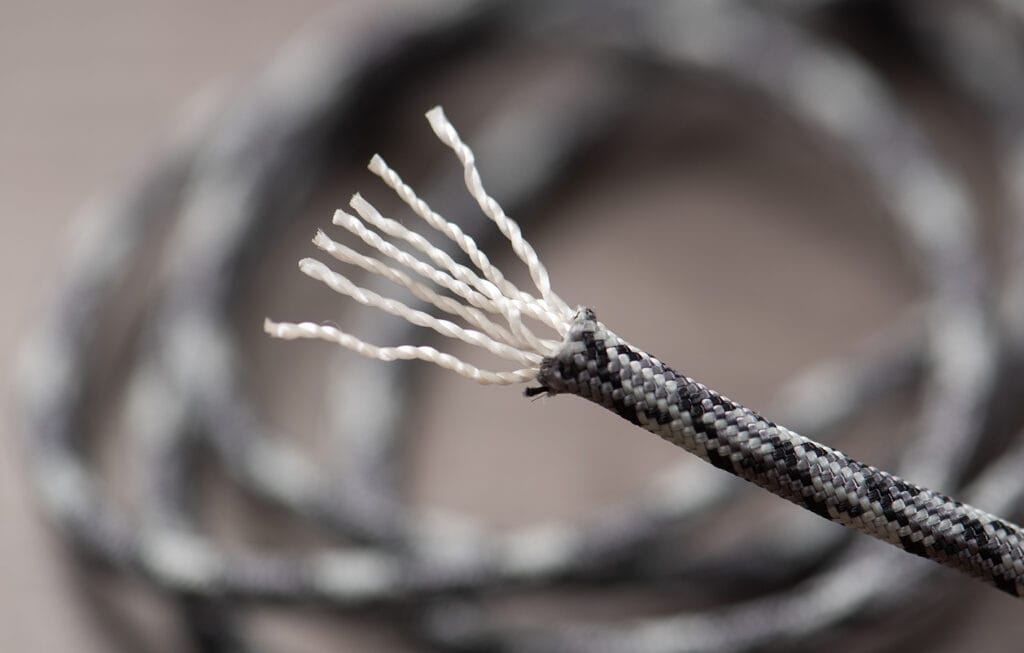
How Thick Should My Climbing Rope Be?
Rope thickness is a feature that will greatly change the way a rope feels and performs. Skinny ropes tend to be difficult to untie, especially after they have been fallen on. Generally, if you are a beginner or if you don’t plan on hiking very far to get to your climb, a thicker rope is a good idea. 9.8mm/0.4 in is a good climbing rope diameter for most general-purpose uses. Some sport climbers who are pushing their grades like skinny ropes because they weigh less. Remember that diameter is not the only thing that impacts weight. Check the grams per meter if you are worried about getting weighed down on your hardest projects. Skinny ropes need to be inspected more frequently because they have a smaller diameter, which means there is less margin between a rope that is good and one that needs to be replaced.
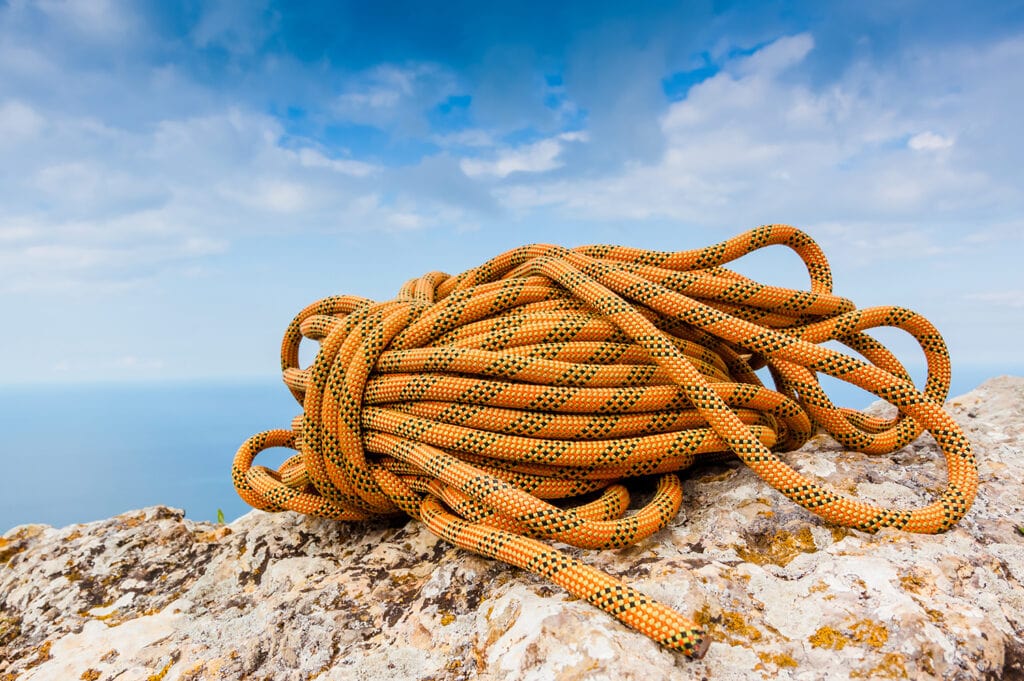
How Do I Make My Rope Last Longer?
The best way to keep your rope in good working condition for longer is to keep it off the ground. Invest in a good rope bag with a tarp to use at the base of climbs. If the rope is on the ground, don’t step on it. If your rope gets really dirty, wash it. Dirt particles work into the core of a rope and destroy it from the inside.
Another good way to keep your rope going longer is not to whip onto it. Long leader falls cause a lot of dynamic elongation, which stretches your rope out and leaves it with less spring. Remember that small falls’ impact force is different from that of giant whippers. If you know a move is too hard, you can always downclimb a bit instead of throwing for it and reduce the impact force on the rope as well as your gear. That being said, part of advancing in climbing is pushing your physical limits. The gear we climb on is rated for high amounts of impact force because of this. You never know; you might just stick to that move you think you’re going to fall on.
